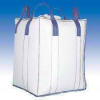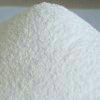| We are manufacturers of Potassium Sorbate FCC Food Grade BP Ph Eur USP IP, Pharmaceutical Excipients chemicals. We offer Halal and Kosher Potassium Sorbate FCC Food Grade BP Ph Eur USP IP made in an ISO9001, ISO22000 (FSSC22000) cGMP and GLP certified facility. |
| The units have one or more of the certifications like FDA GMP, ISO 9001, ISO 22000, HACCP, REACH, Kosher & Halal |
Potassium Sorbate SDS GHS of Manufacturers Suppliers Exporters
CAS Number 24634-61-5 or 590-00-1, EINECS EC Number 246-376-1, HS Code ---**; Molecular Weight 150.2, Molecular Formula: C6H7KO2
Specifications Sheet of Potassium Sorbate Manufacturers Suppliers Exporters
Potassium Sorbate SDS, Safety Data Sheet
MSDS
1. Product Identification
Product Name & Other Names: Potassium sorbate or Potassium 2,4-hexadienoate or Sorbic acid potassium salt.
CAS No.: 24634-61-5 (also quoted is 590-00-1)
EINECS EC Number: 246-376-1
Molecular Weight: 150.22
Chemical Formula: CH3CH=CHCH=CHCOOK
Relevant uses and uses advised against (if any): Industrial Manufacturing.
2. Hazards Identification
GHS, Globally Harmonized System Classification in accordance with 29 CFR 1910
Classification according to Regulation (EC) No 1272/2008
Skin irritation Category 2, H315
Serious eye damage/eye irritation Category 2A, H319
Specific target organ toxicity - single exposure, Respiratory system. Category 3, H335
Labeling according to Regulation (EC) No 1272/2008
GHS Label Elements  Irritant |
Signal Words: Warning
Hazard statements:
H315: Causes skin irritation.
H319: Causes serious eye irritation.
H335: May cause respiratory irritation.
Precautionary statements:
P264: Wash … thoroughly after handling.
P280: Wear protective gloves/protective clothing/eye protection/face protection.
P302+P352: IF ON SKIN: Wash with plenty of soap and water.
P305+P351+P338: IF IN EYES: Rinse cautiously with water for several minutes. Remove contact lenses, if present and easy to do. Continue rinsing.
P332+P313: If skin irritation occurs: Get medical advice/attention.
P337+P313: If eye irritation persists: Get medical advice/ attention.
P362: Take off contaminated clothing and wash before reuse.
Classification according to EU Directives 67/548/EEC or 1999/45/EC:
Hazard Symbol:
Xi Irritant
Risk Phrases:
R36/37/38 = Irritating to eyes, respiratory system, and skin.
3. Composition/Information on Ingredients
Product Name & Other Names: Potassium sorbate or Potassium 2,4-hexadienoate or Sorbic acid potassium salt.
CAS No.: 24634-61-5
EINECS EC Number: 246-376-1
4. First Aid Measures
Always seek medical attention after first aid measures are provided.
Inhalation: Remove to fresh air. If not breathing, give artificial respiration. If breathing is difficult, give oxygen. Get medical attention.
Ingestion: Never give anything by mouth to an unconscious person. Get medical attention.
Skin Contact: Wipe off excess material from skin then immediately flush skin with plenty of water for at least 15 minutes. Remove contaminated clothing and shoes. Get medical attention. Wash clothing before reuse. Thoroughly clean shoes before reuse.
Eye Contact: Immediately flush eyes with plenty of water for at least 15 minutes, lifting lower and upper eyelids occasionally. Get medical attention immediately.
5. Fire Fighting Measures
Flammability of the Product: Non-flammable.
Products of Combustion: Oxides of Carbon and Oxides of Potassium etc.
Fire: Potassium Sorbate is not considered to be a fire hazard.
Explosion: Not an Explosive item.
Fire Extinguishing Media: Use water spray, alcohol-resistant foam, dry chemical or carbon dioxide. Use any means suitable for extinguishing surrounding fire.
Special Information: In the event of a fire, wear full protective clothing and NIOSH-approved self-contained breathing apparatus with full face piece operated in the pressure demand or other positive pressure mode. At high temperatures under fire conditions, it may produce toxic or irritating fumes. Fire-extinguishing work is done from the windward and the suitable fire-extinguishing method according to the surrounding situation is used.
6. Accidental Release Measures
Personal precautions, protective equipment, and emergency procedures: Avoid breathing dust/fumes/gas/mist/vapors/spray. Use individual protective equipment (waterproof boots, suitable protective clothing, safety glasses, etc.). Restrict unprotected personnel from the area. Prevent any contact with hot surfaces. Do not approach facing the wind. Do not touch the spilled material.
Environmental precautions: Do not let the product enter drains, soil, or water sources.
Methods and materials used for containment Cleanup procedures and Storage:
Contain spilled material. Do not let the product enter drains. Use a shovel to put the material into a convenient waste disposal container. Finish cleaning by spreading water on the contaminated surface and allow evacuating as per law.
7. Handling and Storage
Precautions for safe handling: Apply according to good manufacturing and industrial hygiene practices. Ensure proper ventilation. In case of insufficient ventilation, wear suitable respiratory equipment. Wash thoroughly after handling. Do not drink, eat, or smoke while handling. Avoid contact with skin, eyes, and clothing. Minimize dust generation. Avoid breathing dust/fumes/gas/mist/vapors/spray. Keep container tightly closed. Avoid ingestion and inhalation. Use individual protective equipment (waterproof boots, suitable protective clothing, safety glasses, etc.). Prevent any contact with hot surfaces.
Conditions for safe storage, including any incompatibilities: Store in cool, dry, and ventilated area away from heat sources and protected from sunlight in tightly closed original container. Keep air contact to a minimum. Store protected from heat, sparks and ignition sources and incompatible materials. Avoid contact with skin and eyes. Do not store with incompatible materials like strong oxidizing agents, highly alkaline or acidic materials.
8. Exposure Controls/Personal Protection
Airborne Exposure Limits: Not established.
Ventilation System: A system of local and/or general exhaust is recommended to keep employee exposures as low as possible. Local exhaust ventilation is generally preferred because it can control the emissions of the contaminant at its source, preventing dispersion of it into the general work area.
Personal Respirators (NIOSH Approved): For conditions of use where exposure to dust or mist is apparent and engineering controls are not feasible, a particulate respirator may be worn.
Skin Protection: Wear protective gloves and clean body-covering clothing.
Eye Protection: Use chemical safety goggles and/or full face shield where dusting or splashing of solutions is possible. Maintain eye wash fountain and quick-drench facilities in work area.
Other Control Measures: Maintain good housekeeping in work area. Dust deposits on floors and other surfaces may pick up moisture and cause the surfaces to become slippery and present safety hazards. Handle in accordance with good industrial hygiene and safety practice. Wash hands after handling.
9. Physical and Chemical Properties
Appearance: White powder or crystals.
Odor: It is odorless.
Odor threshold: Not available.
pH: 8-11.
Relative density: around 1.36
Melting Point: 210C. Decomposes on heating.
Initial boiling point and boiling range: Not available.
Flash point: Not available.
Auto-ignition temperature: Not available.
Decomposition temperature: Not available.
Upper/lower flammability or explosive limits: No information found.
Vapor pressure: No information found.
Vapor density: No information found.
Evaporation rate: No information found.
Flammability (solid, gas): No information found.
Partition coefficient: n-octanol/water: No information found.
Solubility: It is freely soluble in water.
Viscosity: No information found.
Molecular Weight: 150.22
Molecular Formula: CH3CH=CHCH=CHCOOK
10. Stability and Reactivity
Stability: Potassium Sorbate is stable under ordinary conditions of use and storage.
Hazardous Decomposition Products: It emits oxides of carbon, potassium and fumes when heated to decomposition.
Hazardous Polymerization: Will not occur.
Incompatibilities: Strong oxidizing agents, highly alkaline or acidic materials.
Conditions to Avoid: Incompatibles heat, light and moisture.
11. Toxicological Information
Toxicity data
LD50 Oral - mouse - 1000 mg/kg
LD50 Oral - Rat - 3200 mg/kg
Carcinogenicity: No component of this product present at levels greater than or equal to 0.1% is identified as possible or confirmed human carcinogen by IARC, ACGIH, OSHA and NTP.
Mutagenic Effects: No information found.
Teratogenic Effects: No information found.
Developmental Toxicity: No information found.
12. Ecological Information
Toxicity to Animals:
Fish LC50 (48h) : > 1250 mg/l Brachydanio rerio
Daphnia magna: EC50 (48h) : > 750 mg/l
Algae: EC50 (72h) : 24.1 mg/l Scenedesmus subspicatus
Bacteria: EC50 (3h) : > 100 mg/l
Persistence and Degradability: No information found.
Mobility: No information found.
Bioaccumulation/ Accumulation: No information found.
Results of PBT and vPvB assessment: No information found.
13. Disposal Considerations
Whatever cannot be saved for recovery or recycling should be managed in an appropriate and approved waste disposal facility. Processing use or contamination of this product may change the waste management options. State and local disposal regulations may differ from federal disposal regulations.
14. Transport Information
DOT USA, TDG Canada & ADR/RID Europe: Not dangerous goods.
IMDG/IMO: Not dangerous goods.
IATA/ICAO: Not dangerous goods.
15. Regulatory Information
USA:
SARA 311/312 Hazards: Immediate (acute) health hazard. See section 2.
California Prop. 65 Components: This product does not contain any chemicals known to State of California to cause cancer, birth defects, or any other reproductive harm.
16. Other Information
DISCLAIMER: The information and recommendations set forth herein (hereinafter "Information") are presented in good faith and believed correct as of the date hereof. This MSDS sheet is intended only as a guide to the appropriate precautionary handling of the material by a properly trained person using this product. Individuals receiving the information must exercise their independent judgment in determining its appropriateness for a particular purpose.
Potassium Sorbate FCC Food Grade BP Ph Eur USP IP Manufacturers:
Anmol Chemicals
S-8, SARIFA MANSION, 2ND FLANK ROAD, CHINCHBUNDER, MUMBAI 400009, INDIA
TEL: (OFFICE) 91-22-23770100, 23726950, 23774610, 23723564. FAX: 91-22-23728264
e-mail: anmolc@mtnl.net.in
Copyright and Usual Disclaimer is Applicable. 2 February, 2022
Exporters to USA, Canada, UAE, Dubai, Egypt, Turkey, Mexico, Brazil, Chile, Argentina, Europe, Netherlands, Italy, Spain, Germany, Portugal, France, Malaysia, Indonesia, Thailand, Korea, Japan, etc.




